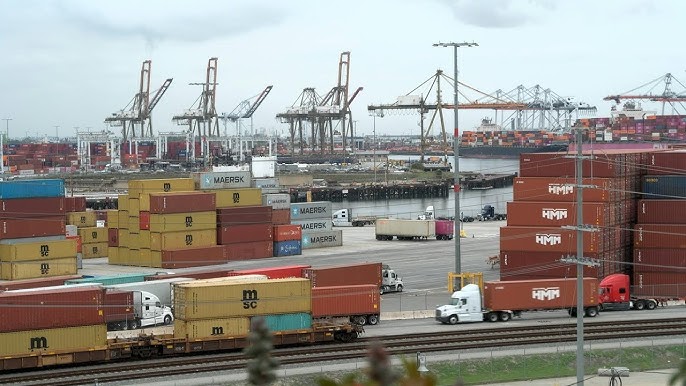
Increased imports before new rates expands imbalance and leads to the first quarterly economic contraction since 2022
The US commercial deficit rose 14% in March, reaching US $ 140.5 billion, the largest amount ever recorded, according to data released on Tuesday (6) by the Economic Analysis Office (BEA) of the Department of Commerce. In February, the deficit had been revised to $ 123.2 billion.
Economists consulted by Reuters agency provided a $ 137 billion deficit, above the previous estimate of US $ 122.7 billion to February. The increase was driven by a significant increase in imports of goods, amid the anticipation of fares on foreign products.
The increase in imports occurred in the context of the tariff policy adopted by the administration of former President Donald Trump. Raising Chinese products to 145% has led US companies to anticipate purchases to avoid new costs.
Although tariffs on business partners were temporarily suspended for 90 days, measures on Chinese goods came into force in early April, starting a period of commercial tensions with China.
In March, total imports rose 4.4%, reaching $ 419 billion, a new record. Imports of goods increased by 5.4%, reaching US $ 346.8 billion. Exports, in turn, grew 0.2% and reached $ 278.5 billion, also a record value. Exports of goods increased 0.7%, totaling US $ 183.2 billion.
Commercial imbalance had a direct impact on the country’s economic performance. According to Bea, the deficit contributed to a reduction of 4.83 percentage points in the United States Gross Domestic Product (GDP) in the first quarter. As a result, the US economy had an annualized retraction of 0.3% in the period, the first quarterly fall since the early 2022.
Analysts point out that the early movement of imports should run out in the coming months. It is expected that, with the normalization of commercial flows, the negative impact on GDP decreases and economic activity grows again in the second quarter.
Increased deficit occurs in a context of uncertainty in international trade relations. The imposition of rates on Chinese products is part of a broader strategy adopted in recent years to rebalance trade and protect strategic sectors from home economy. However, measures like these generated reactions from affected countries, resulting in reciprocal tariff barriers and increased commercial tensions.
Data released on Tuesday indicate that the effects of these policies continue to affect internal economic dynamics. The rise in imports pressured the balance of payments, while modest growth of exports was not enough to compensate for the imbalance.
Despite the negative scenario in the first quarter, private sector projections point to possible recovery in the following months. Economists estimate that slowdown in imports, associated with export stabilization, may contribute to more favorable GDP performance in the second quarter.
The evolution of the commercial deficit will be closely observed by economic policy formulators, investors and companies, as it directly influences decisions on production, investment and fiscal policy. The continuity of commercial tensions and the tariff policy adopted by the US government will follow as weight factors in the country’s economic trajectory in the next quarters.
Source: https://www.ocafezinho.com/2025/05/06/deficit-comercial-dos-eua-atinge-recorde-em-marco-e-contribui-para-retracao-do-pib/

